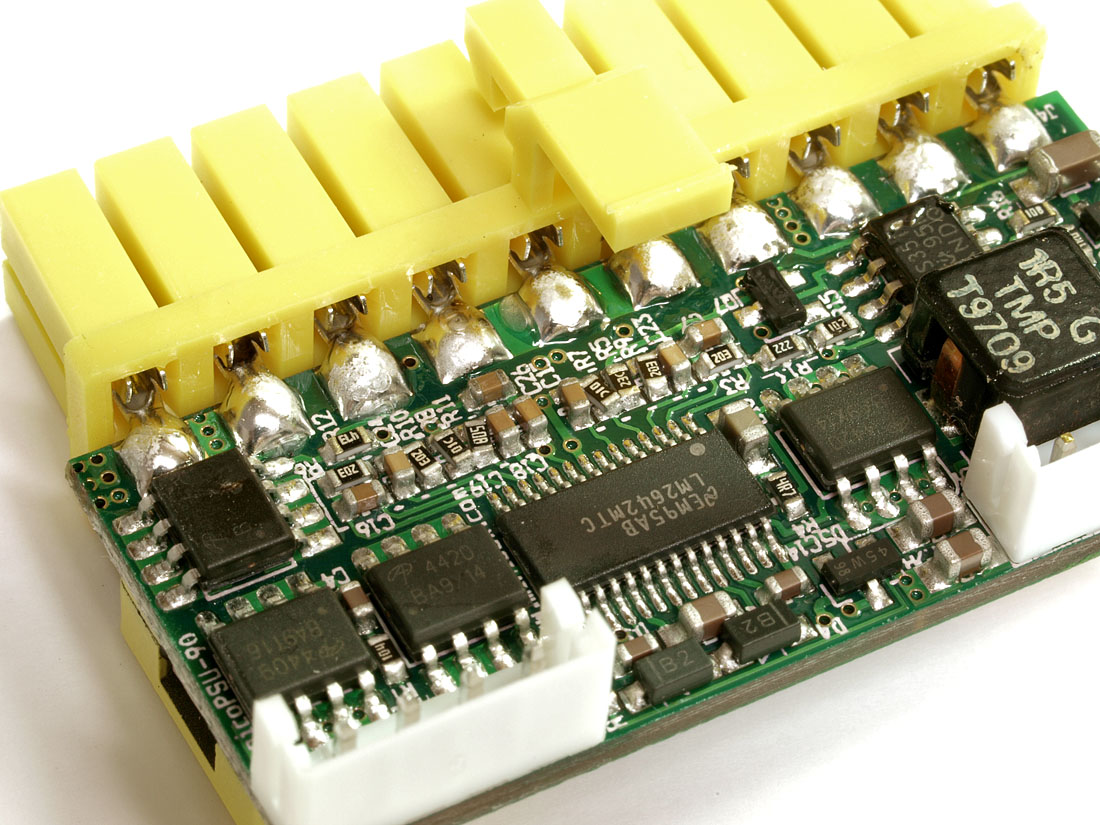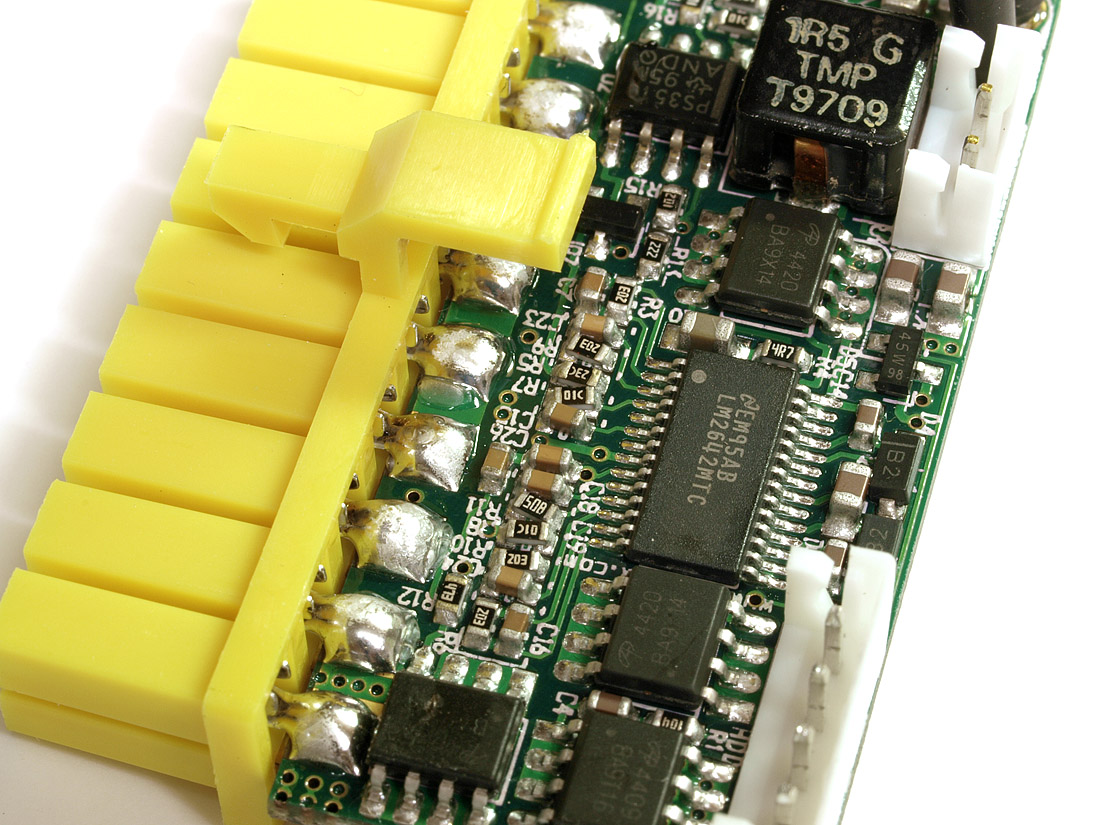linuxworks
Member of the Trade: Sercona Audio
- Joined
- Oct 10, 2008
- Posts
- 3,456
- Likes
- 69
I was reading a post about stepped attens (a month or so back) and how someone noticed that the numbers on the chips didn't line up all in the same direction, for 'looks'.
well, what do you think about THIS, then?



at closer inspection, maybe its not as bad as it looks (lol) but some of the tiny R's sure look like they're so slanted and misaligned that they are shorting with nearby pads! but maybe the factory 'got lucky' and those pads are electrically connected, anyway? it looks a bit like that.
should I dare even try to power it on?
what it is: a 'pico PSU' atx computer plug that has all the 'guts' on the atx power plug board; needing only a 12v dc supply (brick) to drive it. its fanless and puts out all the atx voltages (3.3, 5, 12, -12, so on) and at 80w rated power (so they say). it looked interesting and so I ordered one to try in a NAS I'm building.
I just do NOT like this soldering! dare I even connect it? take a chance??
next time you run into parts that aren't 'looking' the right way, remember this - at least they weren't shorted together like this board has their parts! geeze...
well, what do you think about THIS, then?



at closer inspection, maybe its not as bad as it looks (lol) but some of the tiny R's sure look like they're so slanted and misaligned that they are shorting with nearby pads! but maybe the factory 'got lucky' and those pads are electrically connected, anyway? it looks a bit like that.
should I dare even try to power it on?
what it is: a 'pico PSU' atx computer plug that has all the 'guts' on the atx power plug board; needing only a 12v dc supply (brick) to drive it. its fanless and puts out all the atx voltages (3.3, 5, 12, -12, so on) and at 80w rated power (so they say). it looked interesting and so I ordered one to try in a NAS I'm building.
I just do NOT like this soldering! dare I even connect it? take a chance??
next time you run into parts that aren't 'looking' the right way, remember this - at least they weren't shorted together like this board has their parts! geeze...











